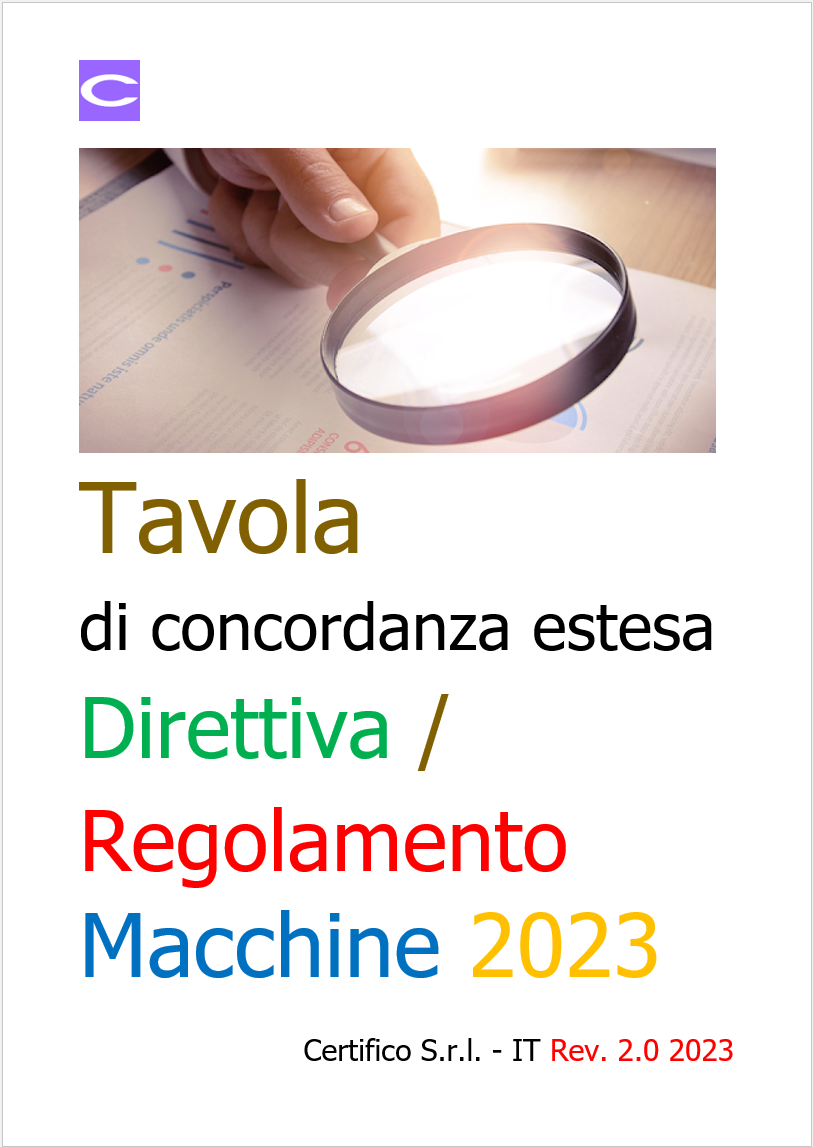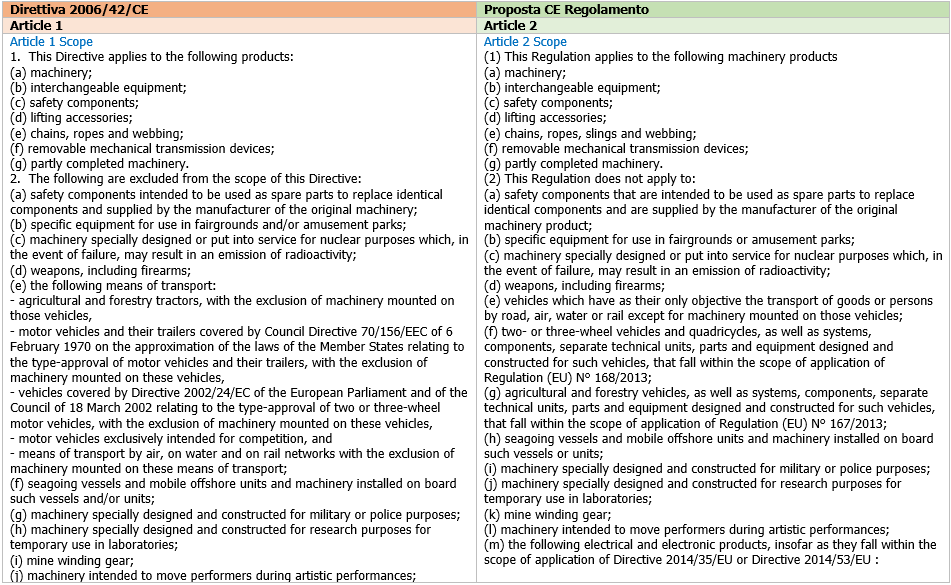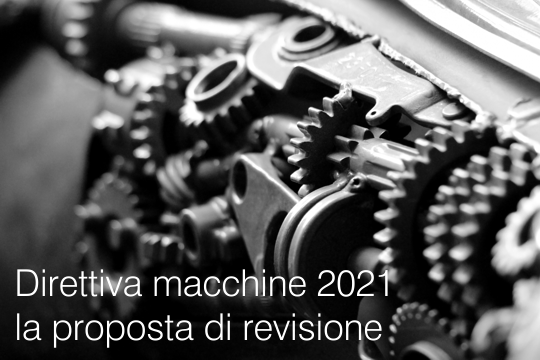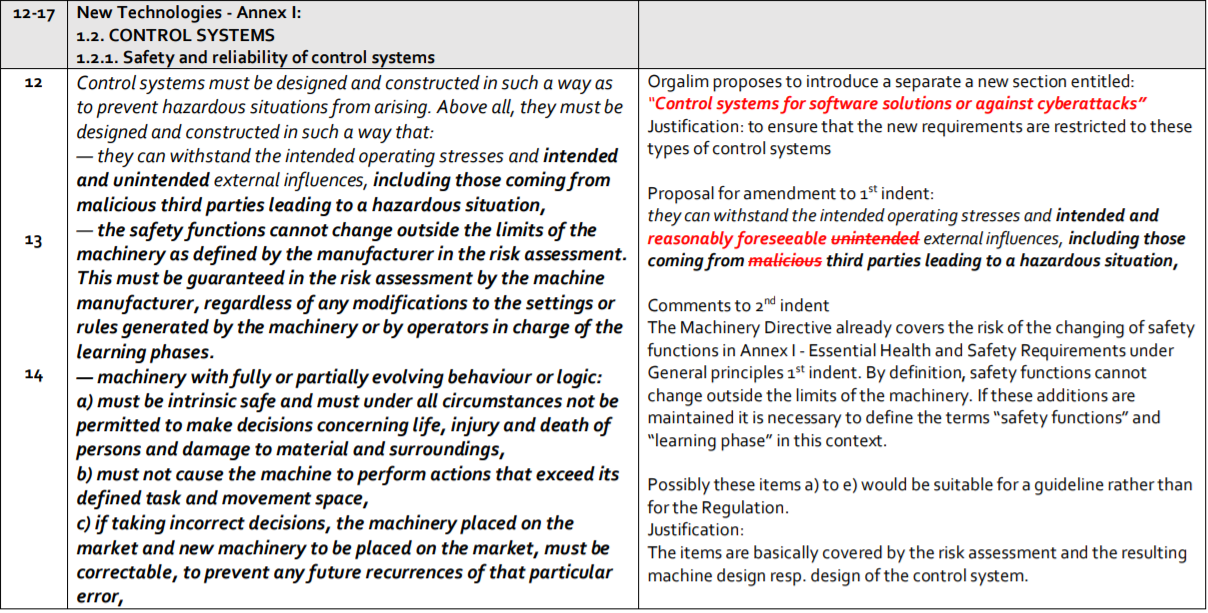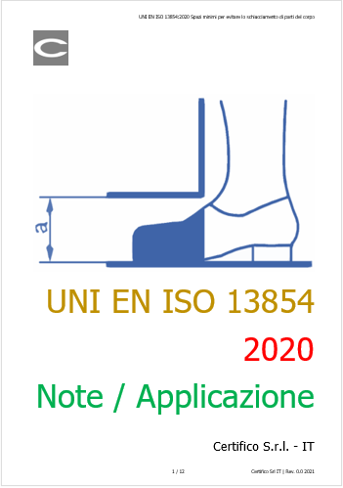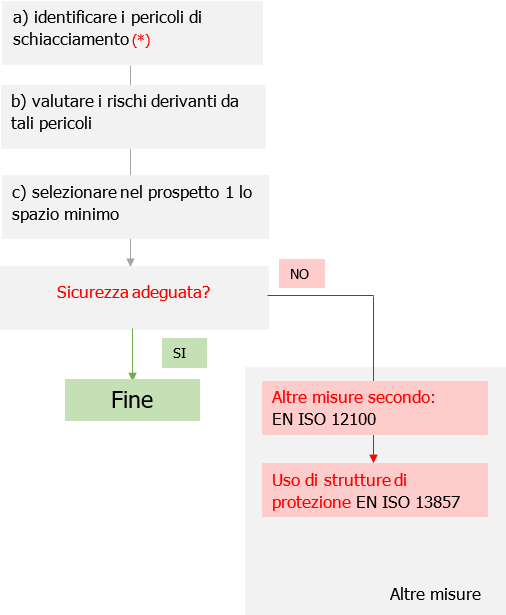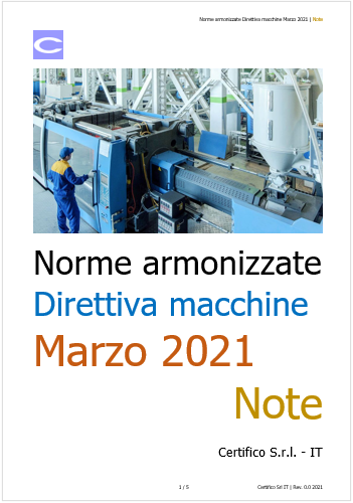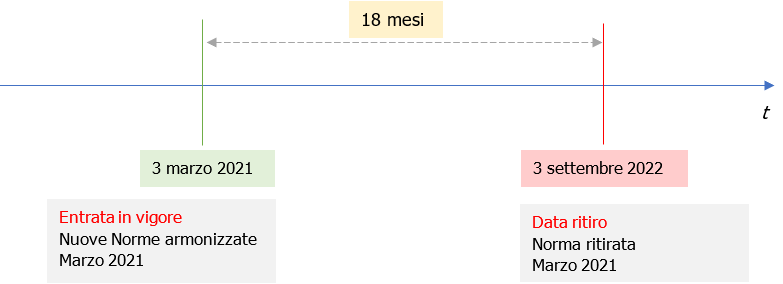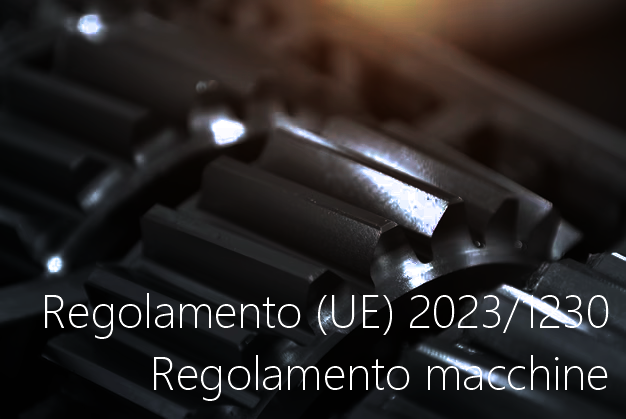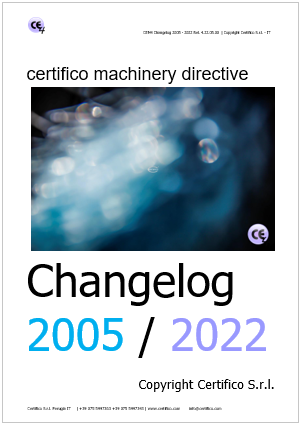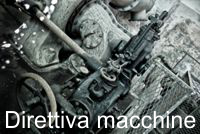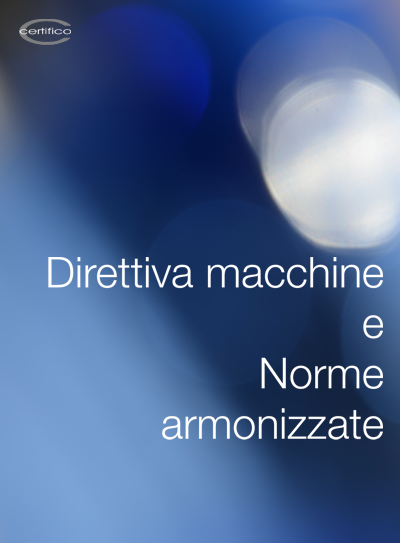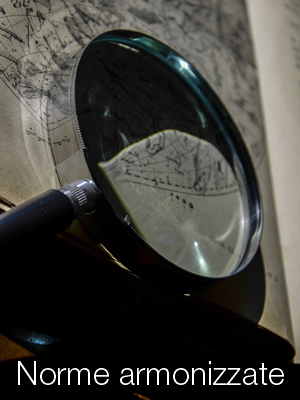Pubblicato in News
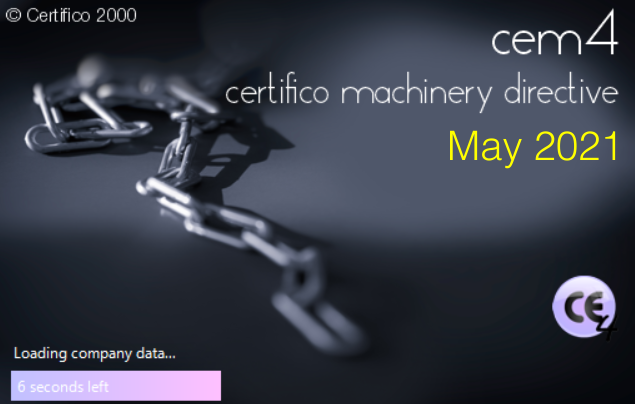
CEM4 May 2021 Update
07 Maggio 2021
CEM4 nella 1a Versione 2021 (155a 2004/2021)
- Pubblicato: 07 Maggio 2021
- Visite: 11017
Pubblicato in News
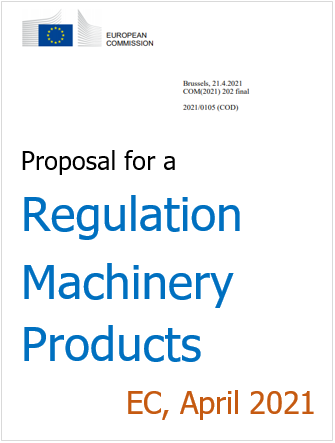
Proposal for a Regulation of the European Parliament and of the Council on machinery products
20.10.2021 / Proposal 2021 Regulation machinery products
EC, 20.10.2021
In attachment:
- 2021/0105/COD Emendament Proposal Regulation machinery 2021
- COM(2021) 202 - Proposal for a Regulation of the European Parliament and of the Council on machinery products
- COM(2021) 202 ANNEX - Annex to the Proposal for a Regulation of the European Parliament and of the Council on machinery products
- SWD(2021) 82 - Impact assessment
- SWD(2021) 83 - Executive summary of the Impact assessment
The Machinery Directive (hereafter ‘MD’) establishes a regulatory framework for placing machinery on the Single Market, based on Article 114 of the TFEU (the approximation of laws. The general objectives of the MD are to: i) ensure free movement of machinery within the internal market; and ii) ensure a high level of protection for users and other exposed persons. The MD follows the ‘new approach’ principles of EU legislation. It is intentionally written to be technology neutral, which means that it lays down the essential health and safety requirements (hereafter ‘safety requirements’) to be complied with, without prescribing any specific technical solution to comply with those requirements. The choice of the technical solution is a prerogative of manufacturers, which leaves space for innovation and new design development.
During the REFIT evaluation of the directive, all interested parties confirmed it is an essential piece of legislation although it identified a necessity to improve, simplify and adapt the MD to the needs of the market. Some Members of the European Parliament’s expressed their support to the revision of the Machinery Directive. In particular, by ‘taking the legislation’ to the XXI century and promoting innovation for the EU economy.
As part of the Commission Work Programme 2020 under the priority ‘A Europe fit for the Digital Age’, the revision of the product safety Directive 2006/42/EC on Machinery (MD) contributes to the digital transition and to the strengthening of the Single Market. Indeed, regarding new technologies and their impact on safety legislation, the Commission has published in February 2020 a White Paper on Artificial Intelligence accompanied by a ‘Report on the safety and liability implications of Artificial Intelligence, the Internet of Things and robotics’. The Report, which has conducted an analysis of the impact of new technologies and the challenges they pose to Union safety legislation, concluded that the current product safety legislation contains a number of gaps that need to be addressed, in particular, among other, in the Machinery Directive. This is even more relevant for a sustainable recovery from the COVID pandemic, since the machinery sector is an essential part of the engineering industry and one of the industrial mainstays of the EU economy.
In view of dealing with the elements highlighted in the evaluation and developed in the impact assessment report of the machinery directive5, as well as responding to the Commission policy objectives on digitalization, this proposal expects to tackle the following problems:
Problem 1: The MD does not sufficiently cover new risks originating from emerging technologies.
In order to boost the trust in digital technologies, the MD needs to provide legal certainty as regards those technologies, existing gaps could hinder a level playing field for manufacturers, which would impact the efficiency of the MD.
There are several aspects that need to be addressed within this problem. The first one relates to the potential risks that originate from a direct human-robot collaboration as the collaborative robots (co-bots) that are designed to work alongside human and employees are exponentially increasing. A second source of potential risk originates from connected machinery. A third area of concern lies with the way software updates affects the ‘behaviour’ of the machinery after its placing on the market. A fourth concern relates to the ability of manufacturers to conduct a full risk assessment on machine learning applications before the product is placed on the market. Finally, as far as the autonomous machines and remote supervisory stations, the current MD foresees a driver or an operator responsible for the movement of a machine. The driver may be transported by the machinery or may be accompanying the machinery, or may guide the machinery by remote control, but does not consider the possibility of no driver, and sets up no requirements for autonomous machines.
Problem 2:
(i) Legal uncertainty due to a lack of clarity on the scope and definitions; and
(ii) possible safety gaps in traditional technologies.
The MD needs greater legal certainty in its scope and definitions, which generated some difficulties for manufacturers to understand the correct legal framework they should apply.
Some overlaps or inconsistencies with other EU specific legislation were identified. With respect to the definitions set by the Directive, the definition of 'partly completed machinery' raised a number of concerns particularly centred at the borderline with the definition of 'machinery' and the definition of ‘machinery’ has been clarified. Besides, there is a need to clarify the exclusion of means of transport and to reinforce the coherence of the exclusion of some products covered by the Low Voltage Directive 2014/35/EU when those products integrate a Wi-Fi function.
Furthermore, it is a common practice that machines placed on the market are modified in order for example to add a function or improve the performance. The problem is that if the machine suffers a substantial modification, without the manufacturer’s agreement, may be not in conformity any longer with the essential health and safety requirements. The current MD does not address this situation.
There are a number of requirements on traditional technologies not related to new technologies that were identified either as not clear or safe enough, or as too prescriptive and potentially hindering innovation. These requirements are related to installation of lifting appliances, slow speed lifts, seating, protection against hazardous substances, overhead power lines and vibration from portable handheld and hand guided machinery.
Problem 3: Insufficient provisions for high risk machines.
The third party conformity assessment is considered by some Member States and stakeholders more adapted to address the high risks stemming from certain groups of machines.
Another problem is that the current list of high-risk machines in Annex I was elaborated 15 years ago, and the market has much evolved since then. It is necessary to remove machines no longer considered high risk and/or introducing new ones (such as machinery embedding AI systems, which fulfil a safety function).
Problem 4: Monetary and environmental costs due to extensive paper-based documentation.
The MD requires manufacturers to provide the necessary machinery information, such as instructions. To ensure that every machine user has access to the instructions, providing a printed version was considered as the most viable option. Since then, however, the use of the internet and digital technologies has increased. The requirement to provide printed versions increases the costs and administrative burdens for economic operators and has a negative impact on the environment. However, it must be also considered that some users are less digitally savvy, there is a lack of internet access in certain environments and the digital manual might not match the version of the product.
Problem 5: Inconsistencies with other pieces of Union product safety legislation.
The New Legislative Framework is a package of measures aimed at brought together all the elements required for a comprehensive regulatory framework to operate effectively for the safety and compliance of industrial products with the requirements adopted to protect the various public interests and for the proper functioning of the single market. A main objective of the Commission is to bring product harmonisation legislation in line with the reference provisions of Decision 768/2008/EC. While the Machinery Directive is already a New Approach directive, it is not yet aligned to the NLF.
The lack of MD’s alignment to the NLF creates inconsistencies with other EU product legislation.
Problem 6: Divergences in interpretation due to transposition.
The fact that the current machinery legislation is a Directive leaving Member States to choose the means to comply with the legislative objectives, has led to different interpretations of the MD provisions creating legal uncertainty and lack of coherence throughout the single market.
Furthermore, there have been delays in the transposition of the Directive in some Member States.
Fonte: EC
- Pubblicato: 21 Aprile 2021
- Visite: 13283
Pubblicato in News
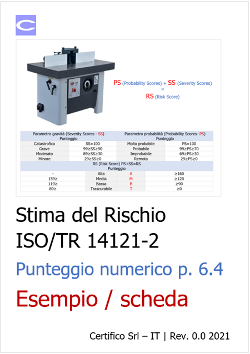
Stima del rischio ISO/TR 14121-2 p. 6.4 Punteggio numerico - Esempio e scheda
ID 13083 | 12.03.2021 / Documento di esempio e scheda applicazione in allegato
La norma ISO/TR 14121-2 (Rapporto Tecnico) Sicurezza del macchinario Valutazione del rischio Parte 2: Guida pratica ed esempi di metodi, fornisce una guida pratica per l'esecuzione della valutazione del rischio per il macchinario in conformità alla EEN ISO 12100 e descrive diversi metodi e strumenti per ogni fase del processo. Fornisce esempi di differenti misure che possono essere utilizzate per ridurre il rischio ed è destinata ad essere utilizzata per la valutazione del rischio di una estesa varietà di macchinari in termini di complessità e di potenziale di danno.
I suoi utilizzatori previsti sono le persone coinvolte nella progettazione, installazione o modifica del macchinario.
Nel Documento è illustrato uno dei metodi riportati nella
ISO/TR 14121-2, il “
Punteggio Numerico” (
p. 6.4), con esempio / scheda di valutazione del rischio e processo di riduzione del rischio per una Macchina formatrice a mandrino verticale, in cui l'identificazione dei pericoli è limitata, in questo esempio, alla fase di utilizzo e, in particolare, alla messa a punto e al funzionamento della macchina.
Nel rapporto tecnico ISO/TR 14121-2, nell’esempio relativo la macchina formatrice, viene usato il metodo grafico. In questo documento, allo stesso esempio viene applicato un metodo a punteggio numerico usando i parametri riportati al capitolo 2.
Metodi di Stima del Rischio ISO/TR 14121-2
Nella ISO/TR 14121-2 sono illustrati 4 metodi per la Stima del rischio:
1. Matrice del rischio (6.2)
2. Grafico del rischio / Metodo grafico (6.3)
3. Punteggio numerico (6.4)
4. Metodo ibrido (6.5)
Si ricorda che la EN ISO 12100 demanda all'uso dei metodi illustrati nella ISO/TR 14121-2 (anche se non armonizzata) per la valutazione dei rischi relativi alle macchine:
"EN ISO 12100
...
Scopo e campo di applicazione ...L’uso pratico di diversi metodi per ogni fase della valutazione del rischio è descritto nell’ISO/TR 14121-2".

Figura 0 - ISO/TR 14121-2 Metodi di Stima del rischio
...
Vedi il Documento
- Pubblicato: 06 Aprile 2021
- Visite: 9214
Pubblicato in News
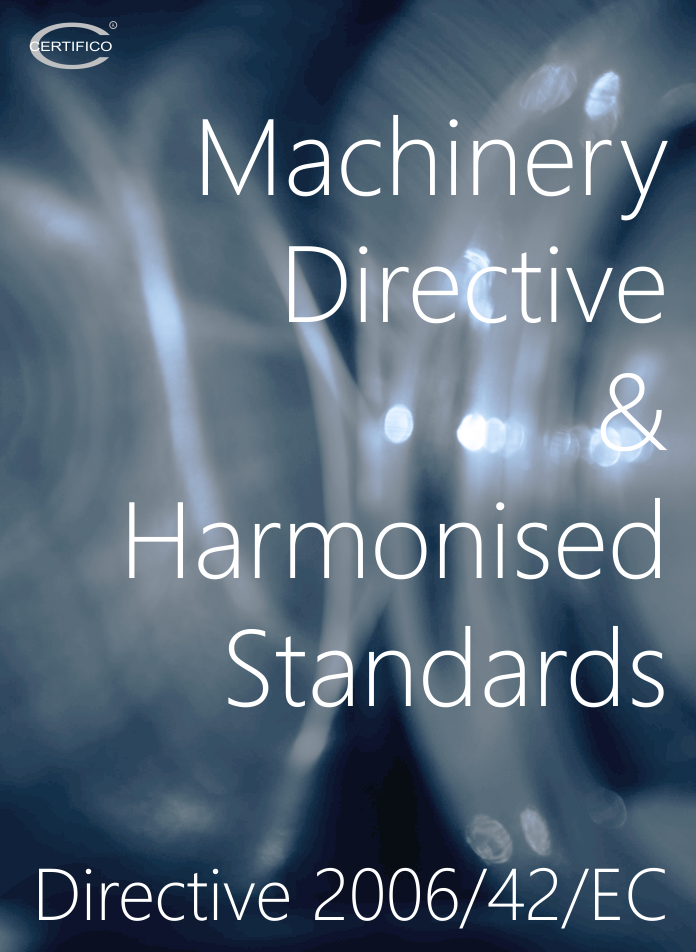
Machinery Directive & Harmonised Standards
Ed. 8.0 March 2021
Directive 2006/42/EC (*) of the European Parliament and of the Council of 17 May 2006 on machinery, and amending Directive 95/16/EC (recast) with last communication references of harmonized standards (**) which have been generated by the HAS (Harmonised Standards) database. Directive 2006/42/EC is a revised version of the Machinery Directive, the first version of which was adopted in 1989.
The Directive has the dual aim of harmonising the health and safety requirements applicable to machinery on the basis of a high level of protection of health and safety, while ensuring the free circulation of machinery on the EU market.
The machinery sector is an important part of the engineering industry and is one of the industrial mainstays of the Community economy. Machinery can be described as "an assembly, fitted with or intended to be fitted with a drive system other than directly applied human or animal effort, consisting of linked parts or components, at least one of which moves, and which are joined together for a specific application".
European Commission Enterprice and Industry
(*) Amendment: Directive 2009/127/EC of the European Parliament and of the Council of 21 October 2009 amending Directive 2006/42/EC with regard to machinery for pesticide application.
(**) Harmonised standards 03.03.2021
Since 1 December 2018 the references of harmonised standards are published in, and withdrawn from the Official Journal of the European Union by means of 'Commission implementing decisions'.
The references published under Directive 2006/42/EC on Machinery are found in the Commission communication published in OJ C 092 of 9 March 2018 and in the Commission Implementing Decision (EU) 2019/436 of 18 March 2019 (OJ L 75, 19 March 2019), in the Commission implementing Decision (EU) 2019/1766 of 23 October 2019 (OJ L L 270/94 del 24 October 2019) and in the Commission implementing Decision (EU) 2019/1863 of 6 November 2019 (OJ L 286/25 07 November 2019) listed below. They need to be read together, taking into account that the decision modifies some references published in the Communication.
- Commission Implementing Decision (EU) 2021/377 of 2 March 2021 amending Implementing Decision (EU) 2019/436 on harmonised standards for machinery drafted in support of Directive 2006/42/EC of the European Parliament and of the Council (OJ L 72/12 03 March 2021)
- Commission implementing Decision (EU) 2020/480 of 1 April 2020 amending Implementing Decision (EU) 2019/436 on harmonised standards for machinery drafted in support of Directive 2006/42/EC of the European Parliament and of the Council (OJ L 102/6 02 April 2020)
- Commission implementing Decision (EU) 2019/1863 of 6 November 2019 amending and correcting Implementing Decision (EU) 2019/436 as regards the withdrawal of references of harmonised standards for machinery from the Official Journal of the European Union (OJ L 286/25 07 November 2019)
- Commission implementing Decision (EU) 2019/1766 of 23 October 2019 amending Implementing Decision (EU) 2019/436 as regards harmonised standard EN ISO 19085- 3:2017 for numerically controlled boring and routing machines (OJ L L 270/94 del 24 October 2019)
- Commission Implementing Decision (EU) 2019/436 of 18 March 2019 on the harmonised standards for machinery drafted in support of Directive 2006/42/EC of the European Parliament and of the Council C/2019/1932 - OJ L 75, 19 March 2019, p. 108–119
- Commission communication 2018 in the framework of the implementation of the Directive 2006/42/EC of the European Parliament and of the Council of 17 May 2006 on machinery, and amending Directive 95/16/EC (recast) - OJ C 092 of 9 March 2018
_______
Ed: 8.0
Date: March 2021
Operating Systems: iOS/Android
Publication Date: 26/03/2021
Author: Dr. Eng. Marco Maccarelli
Publisher: Certifico s.r.l.
Download PDF
Download Apple iOS
Download Google Android
- Pubblicato: 26 Marzo 2021
- Visite: 8702
Pubblicato in News

CEM4: tutte le 160 versioni 2005/2020
Il Report del changelog di tutte le versioni di cem4 rilasciate dal 2005 a Dicembre 2020 ed il dettaglio 2005/2020.
Il dettaglio delle versioni è anche consultabile direttamente nel software da:
Menu principale/?/Informazioni su cem4 4.X.YY/Changelog.
Dettaglio versioni
Tutti i Report Changelog CEM4
- Pubblicato: 10 Marzo 2021
- Visite: 9570






